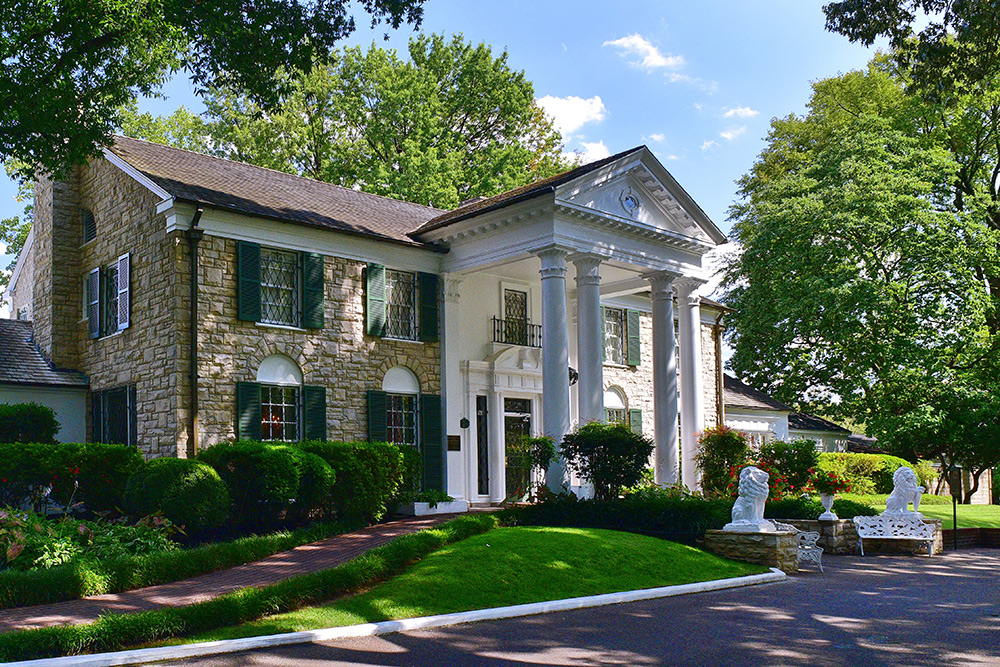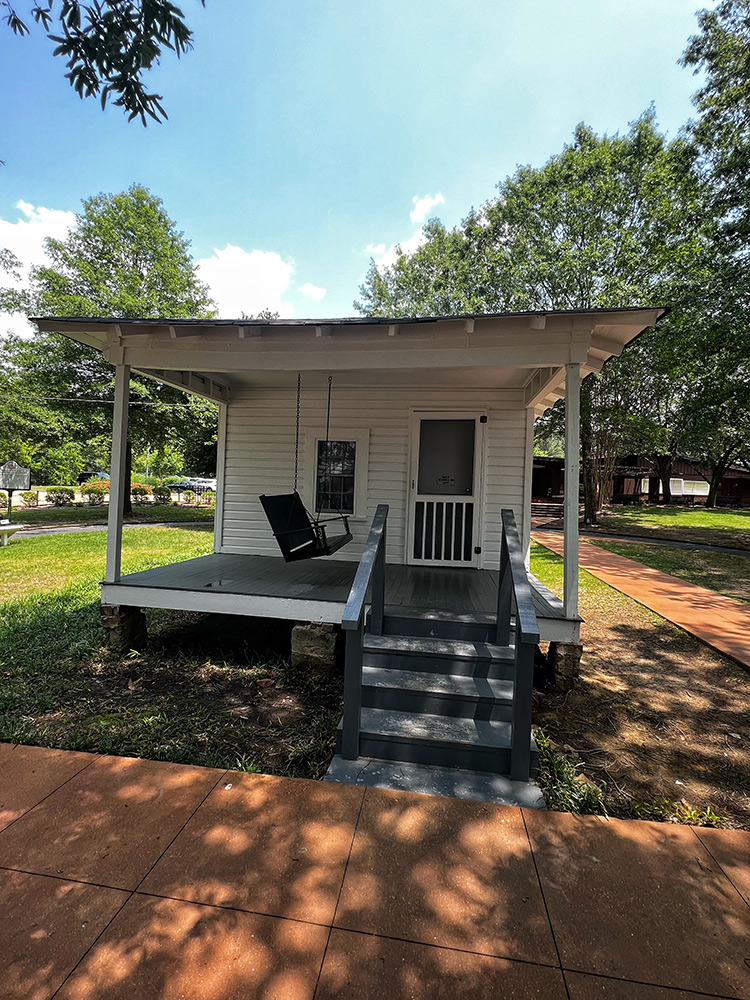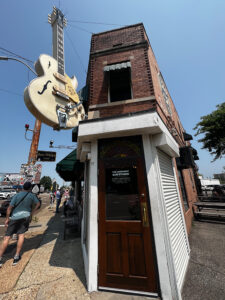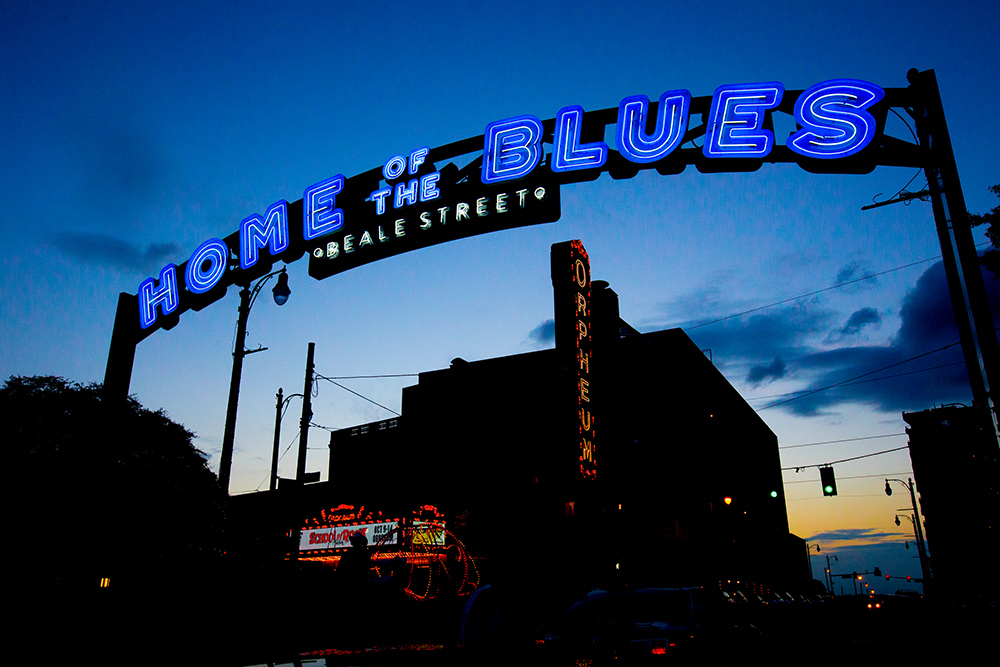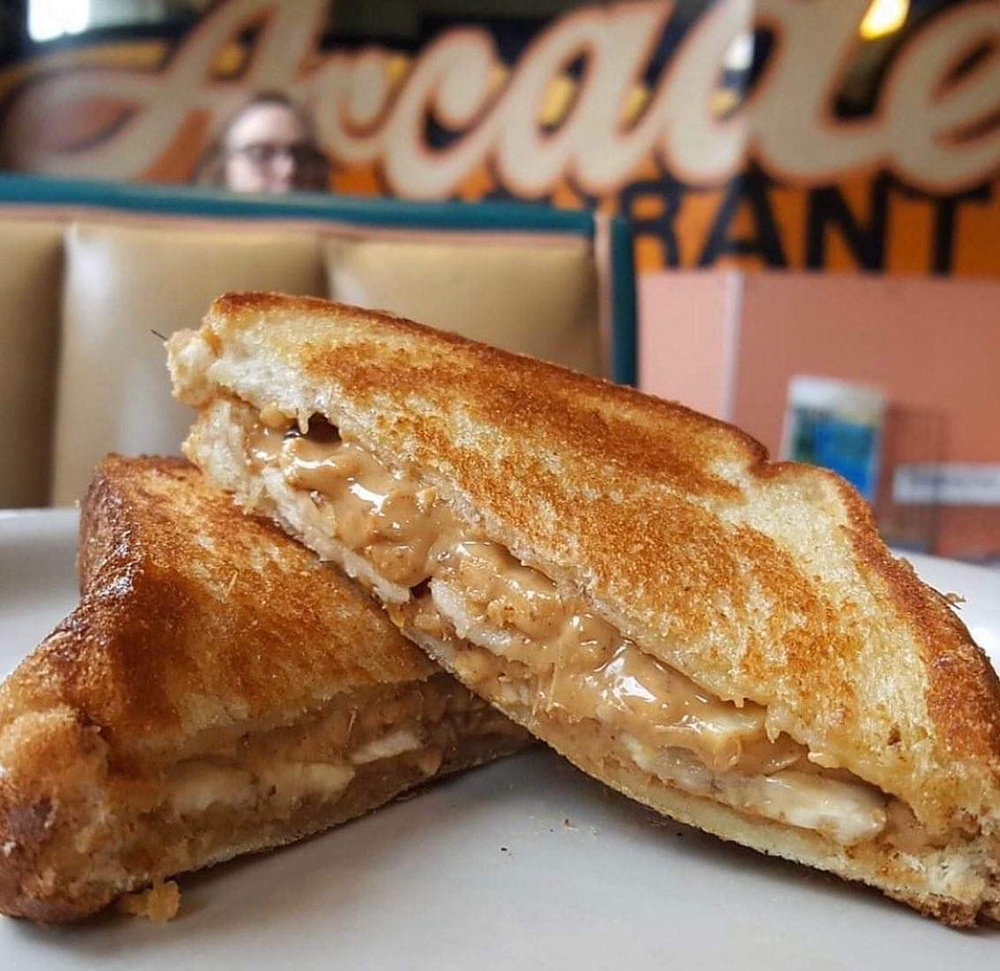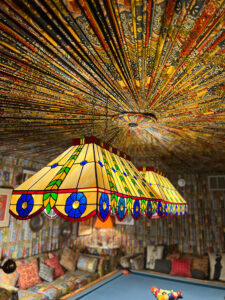A helpful guide to Memphis
History sings in Memphis
For a mix of history, culture and music, Memphis hits the right note. Here is a helpful guide to Memphis.
I am on the porch swing of a tiny wooden house, creaking to and fro and contemplating where I am. Inside this two-room ‘shotgun’ house, is where it all began for one of the world’s biggest stars. Standing in the bedroom, I have goosebumps as the guide tells us that this was where Elvis Aaron Presley came into the world, along with his twin brother Jessie, who sadly was stillborn.
Sitting in a tranquil part of leafy Tupelo, Mississippi, the house is part of a bigger precinct – the Elvis Presley Birthplace – that also includes the church where Elvis had his first taste of gospel and performing. The man who would be king lived in Tupelo until he was 13, when his family moved to Memphis, 90 minutes away.
Feel the beat
Memphis is a big, beautiful, cacophony of sights, sounds and stories that bounce between darkness and light, sorrow and joy. It’s located on the fabled Mississippi River, where you can kayak alongside ships that still navigate the waters with their cargo of people or goods, flanked by outdoor spaces like Tom Lee Park where locals and visitors come out to play.
While the river has its own rhythm, there are many major sites to discover the thrumming beat to this city. Start your musical journey at the Memphis Rock ‘n’ Soul Museum, curated by The Smithsonian, which gives a comprehensive look at music in Memphis from the sharecroppers of the 1930s, to Memphis’ musical heyday in the ‘70s and its global influence. It tells the story of musical pioneers who, for the love of music, overcame racial and socio-economic barriers to create the music that shook the entire world.
Do a tour of Sun Studio, established and run by Sam Phillips, that gave legends like Johnny Cash, Jerry Lee Lewis, Roy Orbison, BB King and Elvis Presley their starts. It also has Dewey Phillips’ studio – Dewey was the first to play Elvis on the radio – in fact he played That’s All Right Mama 14 times that night. You can actually touch the microphone they used and if you are a musician yourself, you can book a session in this sacred space, as it reverts to being a studio every night.
The Stax Museum of American Soul Music is another great tour to do. Sitting on the site of the old Stax Records, it tells the story of American soul music in the Civil Rights Movement. It highlights artists such as Otis Redding, Sam & Dave, Aretha Franklin, Ike & Tina Turner, Booker T. & the M.G.’s, and hundreds of others. There are some permanent exhibits such as Isaac Hayes’ 1972 gold-trimmed Cadillac Eldorado.
For a taste of the Memphis sound, the place to go is Beale Street – the home of the Blues. There is history in every brick of this place, with lively clubs and venues like BB King’s Blues Club, Mr Handy’s Blues Hall, The Handy Bar, Jerry Lee Lewis’ Café and Honky Tonk and Blues City Café.
Soul stirring
It is not all about music in Memphis. A sobering reminder of its significance during the civil rights movement is the National Civil Rights Museum, on the site of the Lorraine Hotel. Here, history smacks me in the face. It is hard to fathom that this is the spot – the balcony outside room 306 – where Martin Luther King Jnr was shot dead on April 4, 1968. It has a powerful impact on my emotions, and I stand there, mute, for some time. Equally as impactful is the museum itself, covering four centuries of the civil rights journey.
There are many other sites that relate to Martin Luther King Jnr and the civil rights movement, from the Mason Temple – the location of his “I’ve Been to the Mountaintop” speech – to the I Am A Man Plaza and the Slave Haven Underground Railroad Museum, where a magnolia tree out the front is a sign that it was a safe haven for runaway slaves, part of the courageous Underground Railroad.

The bouquet hangs outside the room Martin Luther King was staying in at the Lorraine Hotel. He was shot on the balcony. Pic by Helen Hayes
A taste of Elvis’ Memphis
The Arcade Restaurant, the oldest café in Memphis established in 1919 and now being run by the fourth generation of the Zepatos family, was a favourite for Elvis. He used to enter through the side door to avoid any girls that were waiting at the front then he’d sit in the back booth. I sat in his seat, and ate what he ate – a fried peanut butter ‘n banana sandwich with bacon. It was surprisingly good. The Arcade has a lot of history, and has featured in many movies including Walk the Line, The Firm, Elizabethtown and Rain Man, and is a hotspot for celebrities including local Memphian, Justin Timberlake.
But it is Graceland that is the siren call for visitors, and doing a tour is a must. The actual Graceland mansion was smaller than I imagined, but the experience as a whole is huge. Elvis is big business and there is so much to see, with several different buildings showcasing all things Elvis. I particularly loved the Making of Elvis Movie exhibit, showing the attention to detail and the mind-blowing amount of research Baz Luhrmann and his team did before making the movie. Graceland will rank number one in any helpful guide to Memphis.
Once inside Graceland, in carefully monitored tour groups, it is surreal to be walking through the Presley property that Priscilla had the foresight to open to the public in 1982. We see the lounge room with its 4.5-metre custom-made sofa, the kitchen where staff were on duty 24 hours, the bedroom where Elvis’ parents slept, the ahead-of-its-time media room in striking yellow, the den (Jungle Room) with its green shag carpet and African vibe, and the pool room, as well as the exterior buildings – Vernon’s office, the trophy building and the racquetball court.
Out by the pool is the Meditation Garden, a space Elvis loved and where he laid his parents and grandmother to rest around a fountain. Sadly, more graves have been added, including his own, and more recently, that of his beloved grandson and daughter, Lisa Marie. Standing in front of his gravestone, reading the tribute, it starts with “He was a precious gift from God we cherished and loved dearly”.
I think back to that modest shack in Tupelo, to that room where Elvis made his entrance to the world, and silently agree.
Information
Getting there: Fly American Airlines from Los Angeles (LAX) or Dallas Fort Worth (DFW) to Memphis. aa.com
Hotels:
The Peabody Hotel is a classic and historic hotel known for its famous Duck Parade – daily at 11am and 5pjm. It is also where Neil Diamond wrote Sweet Caroline while waiting for Elvis. peabodymemphis.com
The Memphian is a newer property and is artistic and very cool. It is easy to get around from there – you can just jump on the trolley car that runs up and down Main Street with an all-day ticket US$2. thememphian.com
In Tupelo, the Hotel Tupelo is new, has a lovely ambience and a vibrant restaurant called Jobos. hoteltupelo.com
Further information
Memphis Travel: memphistravel.com
Visit Tupelo: tupelo.net
*This story first appeared in Vacations & Travel magazine.

